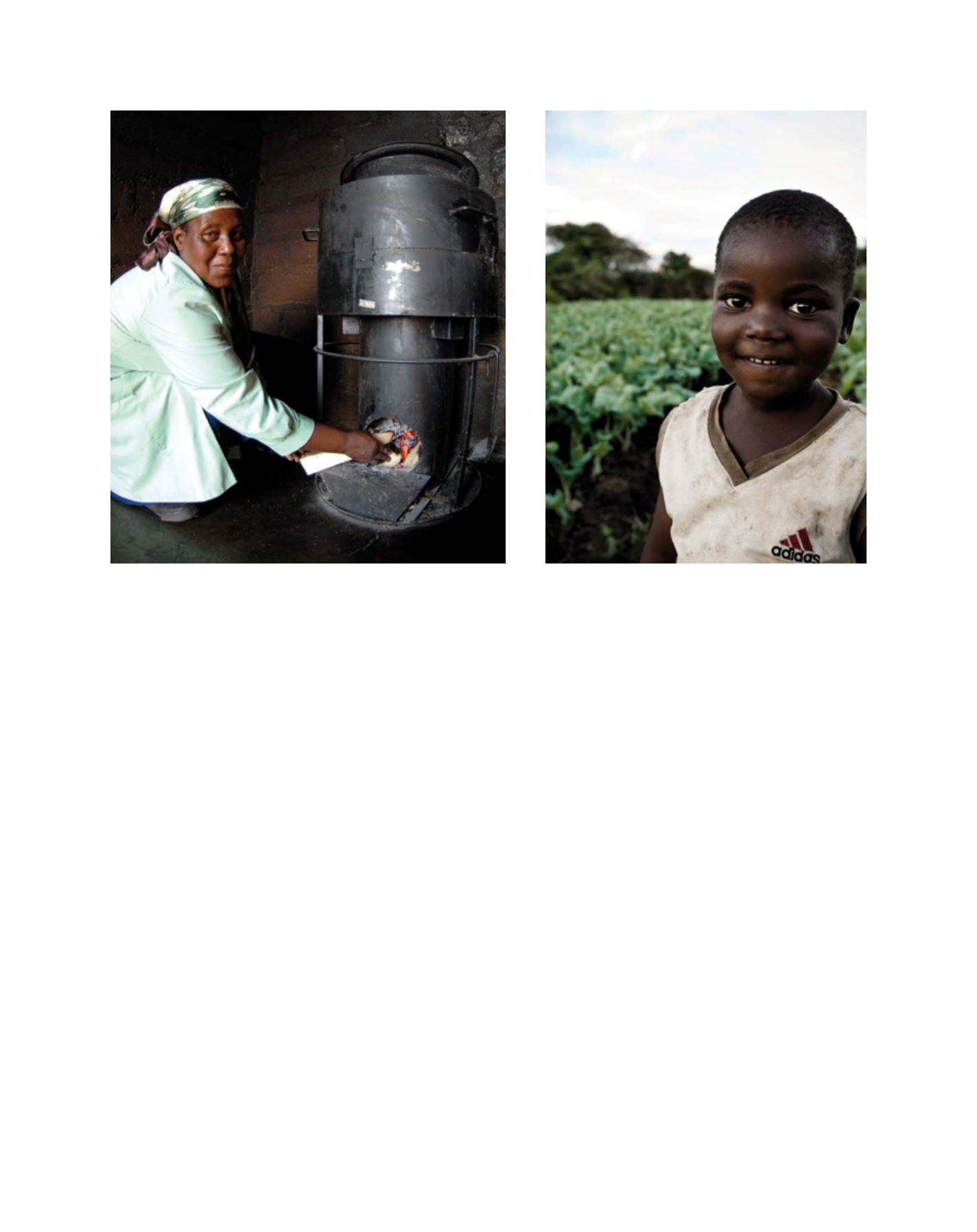

for Child Development from the Bill & Melinda Gates
Foundation (BMGF). Through these partnerships, this
innovative initiative, which aims at providing targeted
school children with locally produced food, will
continue to expand.
The Home Grown School Feeding approach is
holistic and integrated. On the one hand, it provides
incentives for education (both enrolment and reten-
tion of girls and boys) and responses to nutritional
gaps and short-term hunger. On the other hand, it
creates opportunities for stimulating and improving
local farmers’ production, expanding local demand
and increasing local market value. Home Grown
School Feeding has the potential to empower commu-
nities, protect the environment, build local markets
and support local farmers.
An essential intervention
School feeding is an intervention that addresses various
elements of sustainable development. The strength
of WFP in addressing educational development is
its capacity to address the bidirectional relationship
between education and food and nutrition security, as
well as the ability of school feeding to be a platform
for complementary activities. It is evident that through
partnerships, sustainable school feeding produces
outcomes across disciplines that are essential to build-
ing sustainable communities.
sources other than ministries of education, such as funding for
poverty reduction strategies, social protection, the Fast Track
Initiative and the World Bank’s recently established Rapid Social
Response Fund.
Since early 2008, the World Bank Group and WFP have been
working together to help countries develop sustainable school
feeding programmes that provide social safety nets and promote
education. Eight drivers of sustainability were identified through
an analysis of WFP’s 45 years of school feeding and the recent joint
World Bank/WFP school feeding analysis.
19
All school feeding
projects are now to be conceived and designed to ensure:
• Sustainability
• Sound alignment with the national policy frameworks
• Stable funding and budgeting
• Needs-based, cost-effective quality programme design
• Strong institutional arrangements for implementation, monitoring
and accountability
• Strategies for local production and sourcing
• Strong partnerships and inter-sector coordination
• Strong community participation and ownership.
This concept of sustainability and government ownership of school
feeding programmes also incorporates a sustainable approach to
locally procure food for school feeding within the country. The
Home Grown School Feeding initiative is working together with
New Partnership for Africa’s Development (NEPAD)/Comprehensive
Africa Agriculture Development Programme (CAADP), WFP’s
Purchase for Progress programme and a grant to the Partnership
[
] 37
In Luangua an NGO is teaching ex-poachers and ex-charcoal burners
the techniques of organic agriculture which contributes to income
generating as well as environmental protection
WFP food aid distributions target the most vulnerable, including people living with
HIV/AIDS and their households, orphans and other vulnerable children, pregnant and
nursing mothers, underweight children under the age of five and the elderly
Image: WFP/Rein Skullerud
Image: WFP/Stephen Wong
















